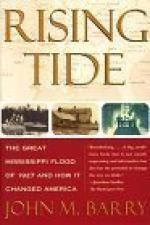
|
| Name: _________________________ | Period: ___________________ |
This test consists of 5 multiple choice questions, 5 short answer questions, and 10 short essay questions.
Multiple Choice Questions
1. Prior to Thompson's plan being implemented, what happened to the refugees south of the levee?
(a) They refused to leave.
(b) They protested.
(c) They evacuated.
(d) They built a new levee.
2. What happened in the Mississippi region between 1884-1889?
(a) The Hoover Dam was built.
(b) Railroads developed quickly.
(c) Someone drove a submarine down the Mississippi.
(d) The first person traveled cross country.
3. What did Leroy Percy's speeches advocate?
(a) Equal rights for women in education and the workforce.
(b) To be able to keep slaves.
(c) Better treatment for blacks and education for black children..
(d) The right for women to vote.
4. Why was Eads allowed to proceed with his idea after being opposed unanimously?
(a) His idea was better than the others.
(b) He bribed the people.
(c) The President overode the initial decision.
(d) He offered to pay for the work himself.
5. What was Eads' proposition to change the mouth of the Mississippi River?
(a) Making a series of canals.
(b) Changing the course of the river.
(c) Building dams.
(d) A series of jetties.
Short Answer Questions
1. In what ways was New Olreans described?
2. What was "changing the fabric of society" in the Delta region during WWI?
3. What helped Leroy Percy lose a lot of his political influence outside of the Delta area?
4. During the major storms that were occurring along the Mississippi River in 1927, what happens to the dam in Arkansas?
5. In 1926, what prevented annual levee maintenance?
Short Essay Questions
1. Both Ellet and Humphreys are in competition to survey the Mississippi River. Ellet's report came out first and Humphreys takes Ellet's report as a personal insult. Why would Humphreys be insulted by Ellet's report?
2. When the author says it is hoped that the bridge construction will "marry steamboats to railroads", what does he mean?
3. How do the politics in New Orleans operate during the time of the flood in 1927?
4. After facing complete opposition, how would Eads' offer to independently pay for the construction of the jetties completely change the minds of the public and politicians?
5. What are the terms that are reached for the levee that protects St. Bernard and Plaquemines to be destroyed?
6. When Humphreys does publish his report, it receives great acclaim in Europe, but because of the Civil War it doesn't receive a lot of recognition in the United States. Why would the Civil War limit the recognition of Humphreys' report?
7. The railroads and river make the Delta region flourish, yet there is a shortage of workers in the area. How will the better treatment of blacks by LeRoy Percy help this problem?
8. As committees are formed to decide about dynamiting the levee, the Mounds Landing crevasse is brought up in conversation. Why is this crevasse brought into the conversation?
9. Humphreys has his friend, Charles Howell, inspect the progress Eads is making on the jetties. Howell makes a report that the jetties aren't working the way Eads said they would. Eads in turn has a friend of his disclaim Humphreys' report. Why does Humphreys lie in his report?
10. It is said in Chapter 13 that the slower the flood, the more dangerous it is. Why would a slow flood be more dangerous than a fast moving flood?
|
This section contains 911 words (approx. 4 pages at 300 words per page) |

|




